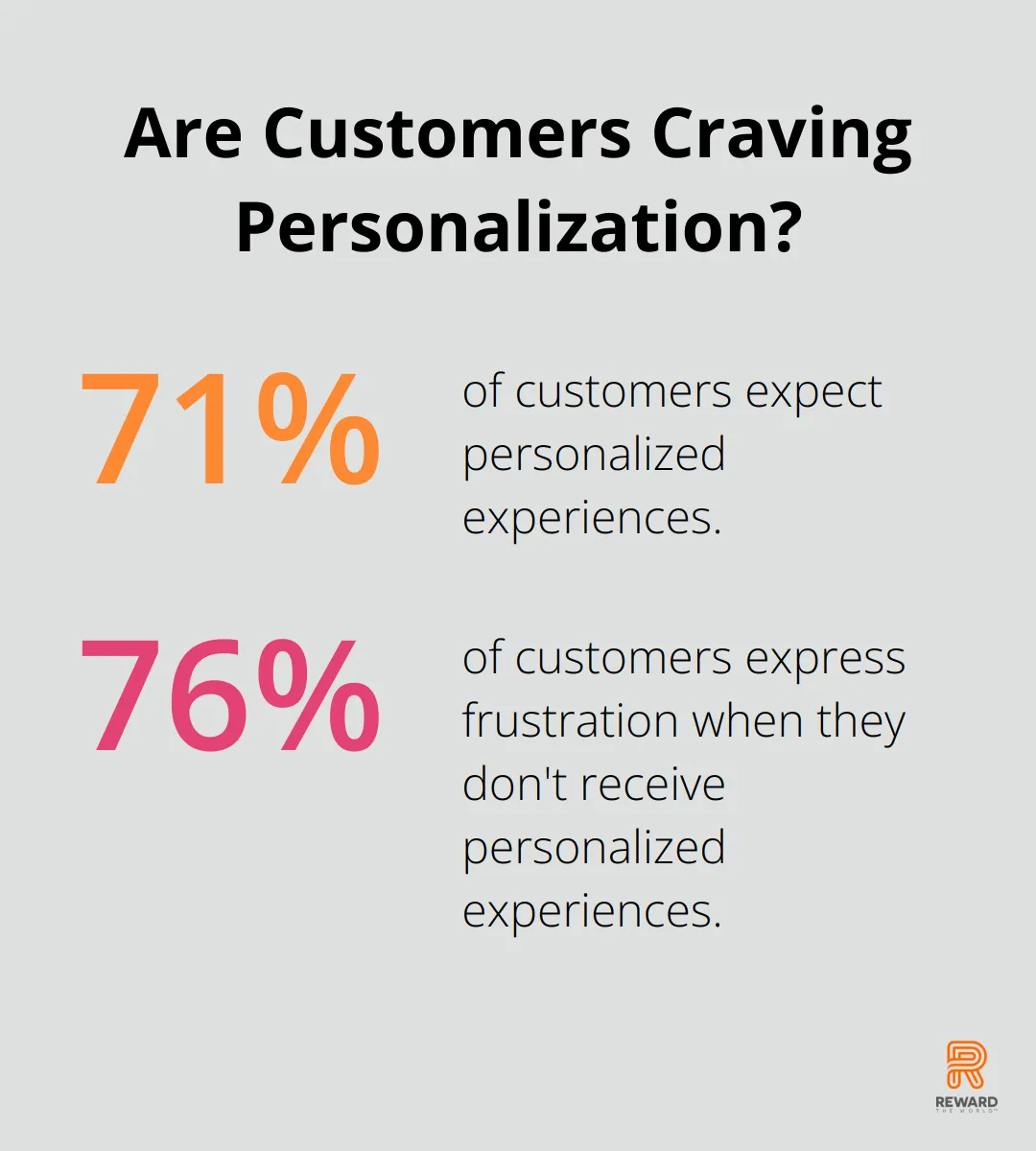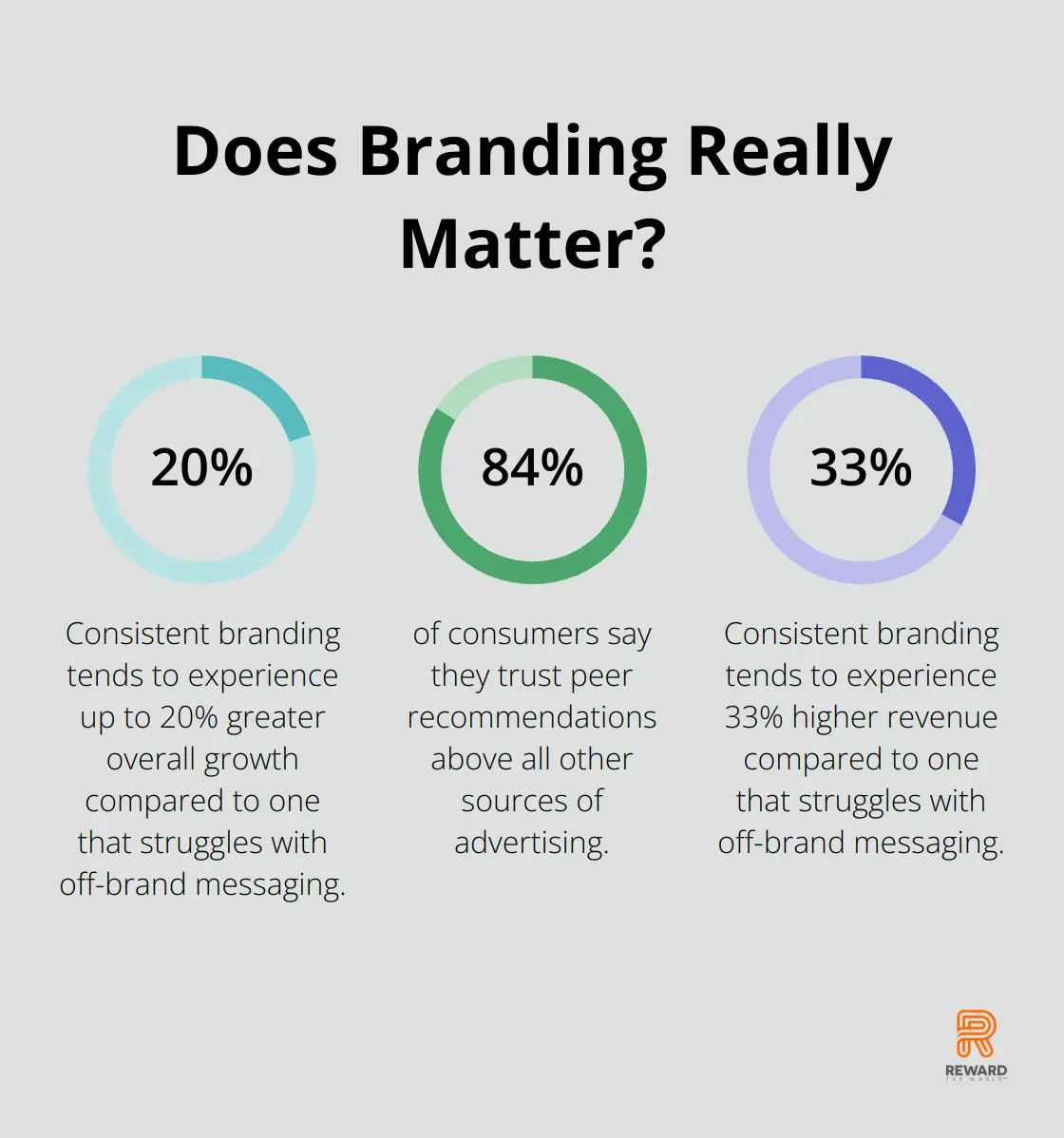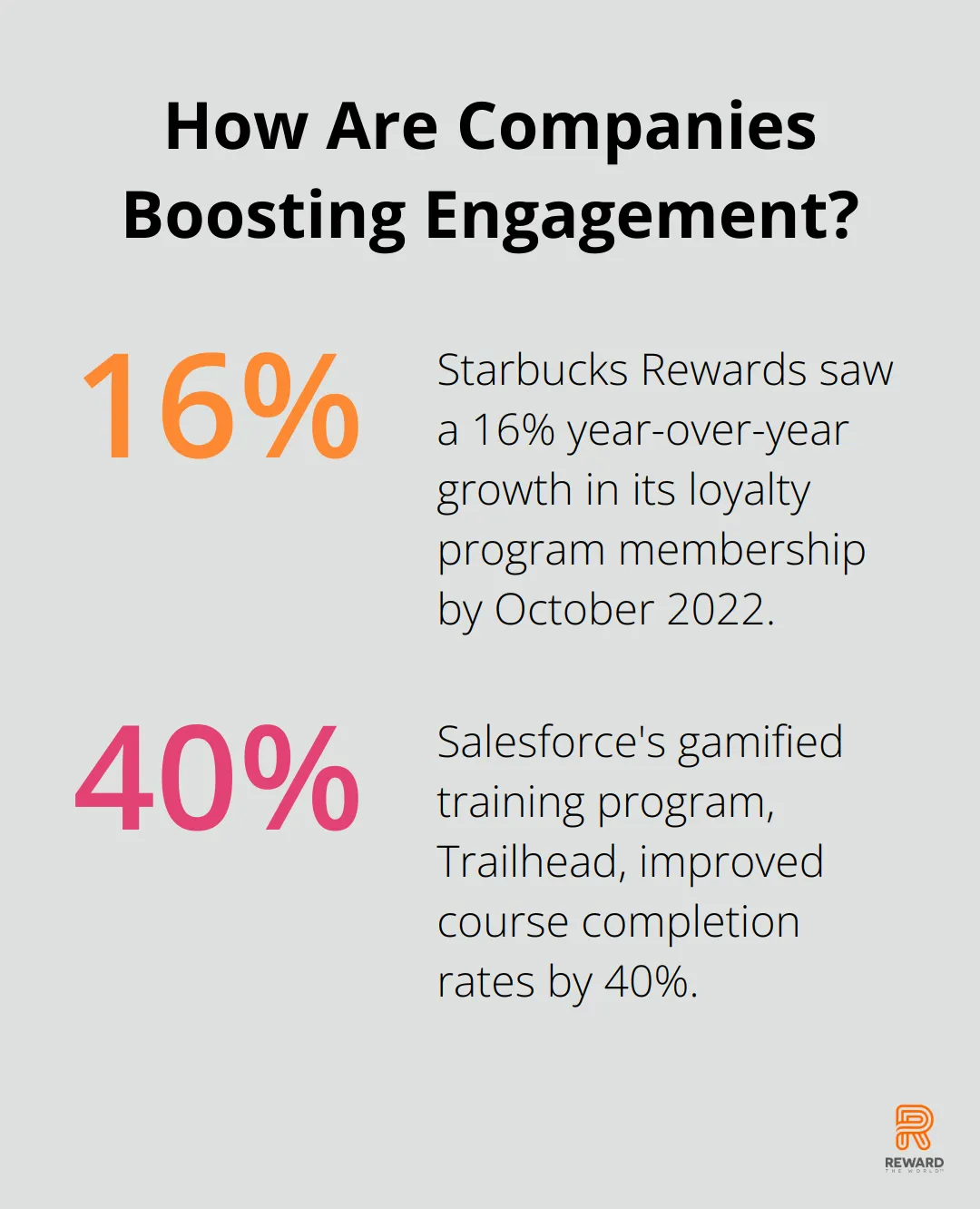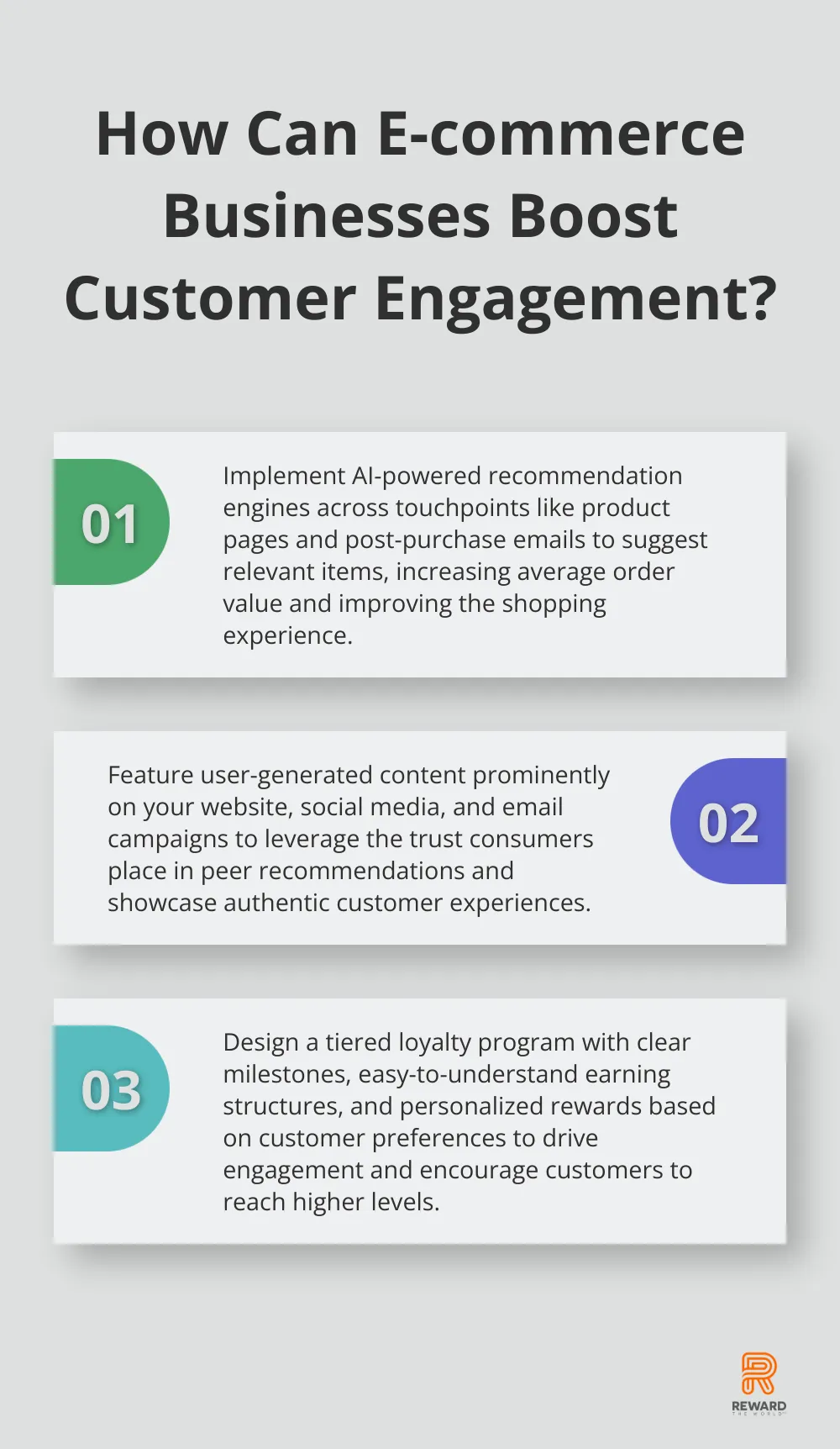
Customer engagement is the lifeblood of any successful business. At Reward the World, we’ve seen firsthand how small, strategic changes can lead to significant improvements in customer interactions.
This blog post explores subtle yet powerful ways to boost engagement, including personalization, storytelling, and gamification. We’ll also delve into how behavioral nudges can subtly influence customer decisions and actions, creating a more engaging experience overall.
How Personalization Boosts Customer Connection
Leveraging Customer Data for Tailored Communications
Personalization helps the vendors to keep relevant with the offers made to the customers and the preferences and needs of the customers. At Reward the World, we’ve witnessed the impact of tailored experiences on engagement and loyalty. 71% of customers expect personalized experiences, with 76% expressing frustration when they don’t receive them. To harness this power, segment your audience based on demographic information, purchase history, and behavioral data. This segmentation enables targeted email campaigns, personalized product recommendations, and customized offers that resonate with each group.

Consider a clothing retailer that sends different email content based on past purchases. They might showcase new arrivals in women’s shoes to frequent footwear buyers, while highlighting men’s accessories to those interested in that category.
Dynamic Content: Real-Time Adaptation
Dynamic content on websites and apps significantly improves user engagement. This approach automatically adjusts content, offers, or layout based on user behavior, preferences, or context.
Use geolocation data to display relevant local offers or adjust your homepage hero image based on browsing history. An e-commerce site could show winter coats to visitors from colder regions and swimwear to those in tropical areas (adapting to both location and season).
AI-Powered Recommendations: Enhancing the Customer Journey
Artificial Intelligence revolutionizes personalization approaches. AI-powered recommendation engines analyze customer data to identify trends and preferences, leading to more effective cross-selling and upselling strategies.
Implement AI recommendations across various touchpoints – from product pages (“Customers who bought this also bought…”) to post-purchase emails suggesting complementary items. This strategy not only increases average order value but also improves the overall shopping experience by helping customers discover relevant products they might have missed.
Balancing Personalization and Privacy
While personalization offers powerful benefits, it’s essential to strike the right balance. Always prioritize data privacy and give customers control over their data usage preferences. Transparent communication about data collection and usage builds trust and encourages customers to engage with personalized experiences.
As we move from personalization to storytelling, we’ll explore how crafting compelling narratives can create emotional connections with your audience, further enhancing engagement and brand loyalty.
How Stories Create Emotional Bonds
Craft Your Brand’s Unique Story
Every brand has a story to tell. Focus on what makes your company unique – its origins, values, and mission. A study found that 55% of brand first impressions are visual. TOMS Shoes built its entire brand around the story of its one-for-one giving model, resonating deeply with socially conscious consumers.
Showcase Real Customer Experiences
User-generated content (UGC) is a goldmine for authentic storytelling. According to research, 84% of consumers say they trust peer recommendations above all other sources of advertising. Encourage customers to share their experiences with your products or services. Feature these stories on your website, social media, and in email campaigns. GoPro excels at this, regularly showcasing customer-created content that highlights the versatility and quality of their cameras.
Leverage Social Media for Real-Time Engagement
Social media platforms offer unique opportunities for real-time storytelling. Instagram Stories and Facebook Live allow brands to share behind-the-scenes glimpses, product launches, and customer testimonials as they happen. Airbnb’s Instagram account is a prime example, featuring stunning photos and stories from hosts and travelers worldwide (effectively selling experiences rather than just accommodations).
Use Emotional Triggers in Your Narratives
Research shows that ads with above-average emotional response from consumers cause a 23% increase in sales compared to average advertisements. Identify the emotional triggers that resonate with your audience – whether it’s joy, nostalgia, or a sense of belonging. Coca-Cola’s Share a Coke campaign tapped into personal connections by putting names on bottles (resulting in a 2% increase in soft-drink sales).
Create a Consistent Narrative Across Channels
Ensure your brand story remains consistent across all touchpoints. A study found that consistent branding tends to experience up to 20% greater overall growth and 33% higher revenue compared to one that struggles with off-brand messaging. Develop a brand voice guide and train your team to maintain this consistency in all customer interactions, from social media posts to customer service calls.

As we move forward, we’ll explore how gamification can transform customer engagement into an enjoyable and rewarding experience, building on the emotional connections established through storytelling.
How Gamification Boosts Engagement
The Power of Points and Challenges
Gamification transforms customer interactions into enjoyable, rewarding experiences. Points systems drive engagement effectively. Starbucks Rewards saw a 16% year-over-year growth in its loyalty program membership by October 2022, with 28.7 million active members. Points create a sense of progress and achievement, encouraging customers to interact more frequently with brands.

Businesses should design challenges that align with their goals. A fitness app might offer a 30-day step challenge, while an e-commerce site could reward customers for trying products from different categories. These challenges keep customers engaged over time and can lead to new product discoveries or habit formation.
Loyalty Programs That Work
Effective loyalty programs offer achievable milestones and clear rewards. The North Face’s XPLR Pass program exemplifies this, offering members points for purchases and outdoor activities.
Key elements of successful loyalty programs include:
- Clear value proposition
- Easy-to-understand earning structure
- Variety of redemption options
- Personalized rewards based on customer preferences
Tiered programs can be particularly effective. Sephora’s Beauty Insider program offers increasing benefits across three tiers, driving customers to engage more to reach higher levels.
Competitive Spirit Drives Engagement
Leaderboards and competitions tap into our natural competitive instincts. Fitbit found that users with just one friend on the platform took 700 more steps per day on average.
Companies should create competitions that foster community rather than cutthroat rivalry. A book retailer might run a summer reading challenge, with participants logging books read and sharing reviews. The focus here is on collective achievement and shared experiences, rather than individual winners.
For B2B contexts, team-based competitions work well. Salesforce gamified their training program with Trailhead, where teams compete to earn badges and ranks. This approach improved course completion rates by 40%.
Integrating Gamification Effectively
Businesses must align game elements with overall objectives and customer needs. The key is to create experiences that are both enjoyable and valuable for the audience. Reward the World’s platform (which offers instant reward delivery spanning eGift cards, cash payments, and points in over 60 million rewards) provides an excellent foundation for implementing gamification strategies.
Companies should test different gamification elements to find what resonates with their specific audience. Some customers might respond better to points systems, while others prefer challenges or competitions. Regular analysis and adjustment of gamification strategies (using robust analytics tools like those offered by Reward the World) ensure continued engagement and effectiveness.
Final Thoughts
Personalization, storytelling, and gamification transform customer engagement strategies. These approaches create tailored experiences, build emotional connections, and add fun elements to interactions. Behavioral nudges subtly influence customer decisions, enhancing overall engagement and satisfaction.

Companies must continuously improve and adapt their engagement tactics. Regular analysis of metrics and willingness to refine strategies ensure long-term success in a rapidly evolving market. Businesses should implement these techniques to foster stronger, more loyal customer relationships.
Reward the World’s platform offers comprehensive solutions for enhanced customer engagement. With instant rewards, multilingual support, and powerful analytics, it provides the necessary tools to implement and optimize these strategies effectively. Companies can leverage this platform to drive growth and success in today’s competitive marketplace.
